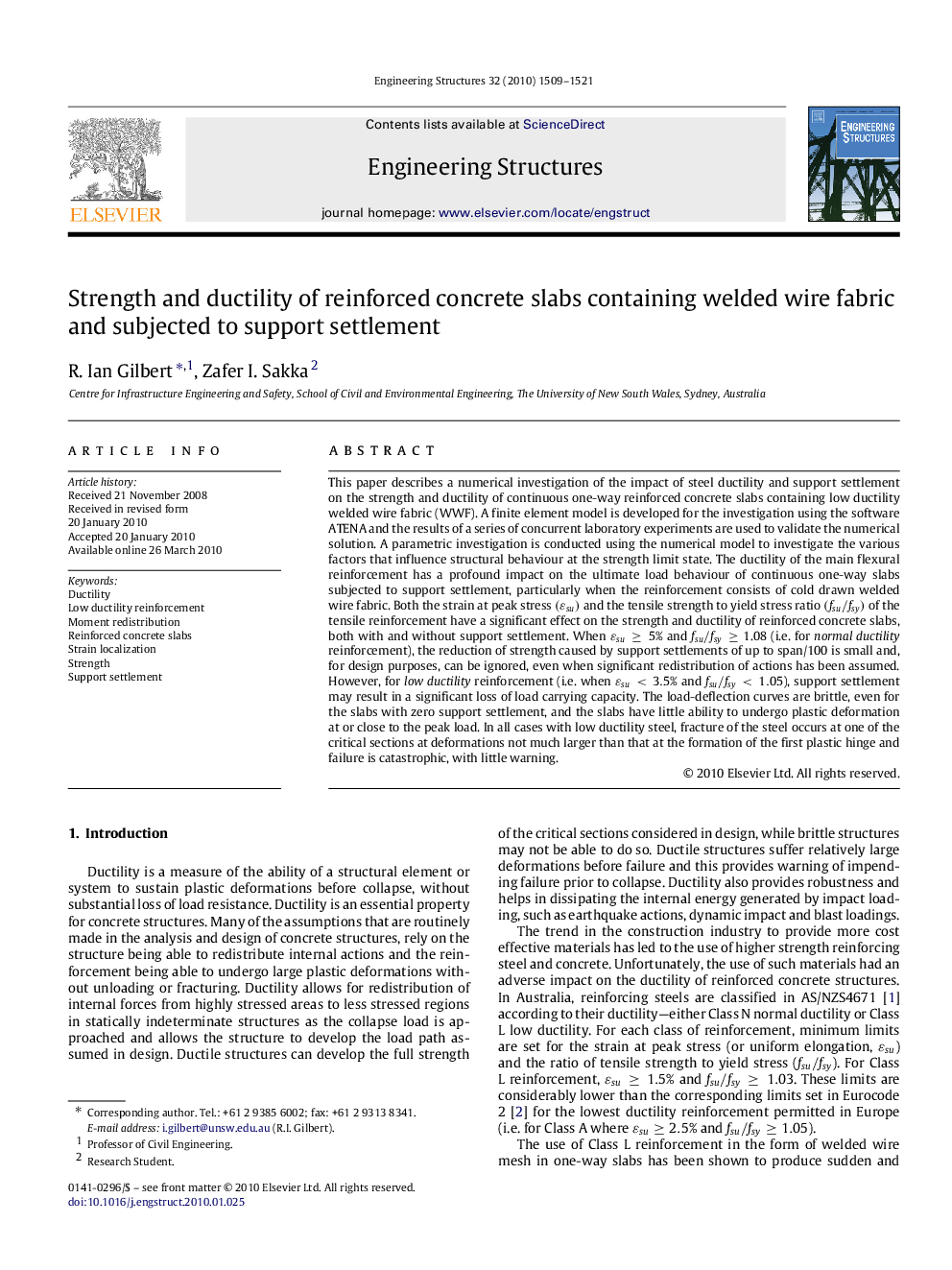| Article ID | Journal | Published Year | Pages | File Type |
|---|---|---|---|---|
| 268279 | Engineering Structures | 2010 | 13 Pages |
This paper describes a numerical investigation of the impact of steel ductility and support settlement on the strength and ductility of continuous one-way reinforced concrete slabs containing low ductility welded wire fabric (WWF). A finite element model is developed for the investigation using the software ATENA and the results of a series of concurrent laboratory experiments are used to validate the numerical solution. A parametric investigation is conducted using the numerical model to investigate the various factors that influence structural behaviour at the strength limit state. The ductility of the main flexural reinforcement has a profound impact on the ultimate load behaviour of continuous one-way slabs subjected to support settlement, particularly when the reinforcement consists of cold drawn welded wire fabric. Both the strain at peak stress (εsu)(εsu) and the tensile strength to yield stress ratio (fsu/fsy)(fsu/fsy) of the tensile reinforcement have a significant effect on the strength and ductility of reinforced concrete slabs, both with and without support settlement. When εsu≥5%εsu≥5% and fsu/fsy≥fsu/fsy≥ 1.08 (i.e. for normal ductility reinforcement), the reduction of strength caused by support settlements of up to span/100 is small and, for design purposes, can be ignored, even when significant redistribution of actions has been assumed. However, for low ductility reinforcement (i.e. when εsu<3.5%εsu<3.5% and fsu/fsy<1.05fsu/fsy<1.05), support settlement may result in a significant loss of load carrying capacity. The load-deflection curves are brittle, even for the slabs with zero support settlement, and the slabs have little ability to undergo plastic deformation at or close to the peak load. In all cases with low ductility steel, fracture of the steel occurs at one of the critical sections at deformations not much larger than that at the formation of the first plastic hinge and failure is catastrophic, with little warning.
